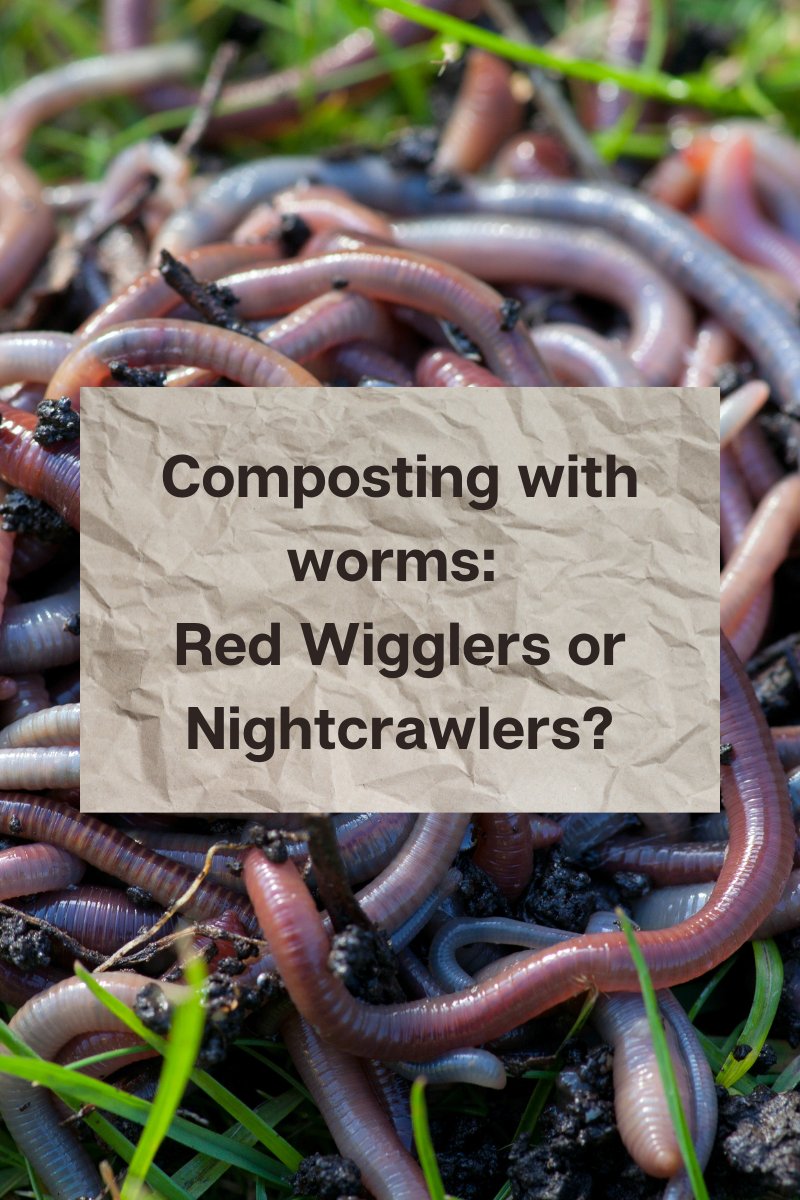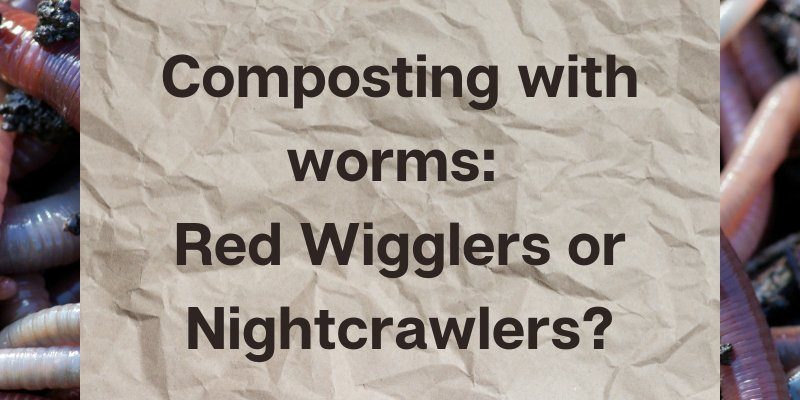
Red wigglers and nightcrawlers are two different types of earthworms, each with unique characteristics and habitats. Think of them like two different superheroes—each with their own powers! Red wigglers excel at composting, while nightcrawlers are great for aerating soil. Let’s explore how you can tell these two apart, what they do, and why it matters.
Physical Differences: Shape and Size
One of the easiest ways to spot the difference between red wigglers and nightcrawlers is their size and shape. Red wigglers, scientifically known as *Eisenia fetida*, are typically smaller, averaging around 3 to 4 inches long. They have a distinct reddish-brown color and a somewhat slender body. Picture a tiny hot dog—short and compact.
On the other hand, nightcrawlers, or *Lumbricus terrestris*, can grow much larger—up to 8 to 10 inches! They have a more robust and thicker appearance, basically resembling a thick sausage. Their color can vary from light brown to dark greenish-brown, and they often have a smoother appearance compared to the wrinkly bodies of red wigglers.
Here’s a quick comparison for clarity:
- Red Wigglers: 3-4 inches long, reddish-brown, slender body
- Nightcrawlers: 8-10 inches long, light to dark brown, thicker body
Being able to visualize these differences can help you identify which worm you’re dealing with on your next garden adventure.
Habitat Preferences: Where They Live
Understanding where these worms prefer to live is crucial for identification. Red wigglers love to chill in compost piles, manure, or any organic material that’s breaking down. They thrive in warm, moist environments and can often be found packed together, munching on decomposed leaves and fruit scraps. Think of them as the recyclers of the worm world—they’re helping to break down waste into rich compost!
In contrast, nightcrawlers enjoy a more spacious underground lifestyle. They dig deep into the soil, creating burrows that can go down several feet. They prefer cooler, moist soil and are often found in gardens, meadows, and fields. So, if you’re digging in your garden and come across a long, thick worm in the soil, there’s a good chance it’s a nightcrawler enjoying its cozy home.
Behavior and Movement: How They Wiggle
Next, let’s talk about behavior. This might sound a bit silly, but the way these worms move can be a huge clue in identifying them. Red wigglers are known for their energetic, wriggly movement. They seem to dance through the compost, which is a clear sign they’re digging for food—quick and spunky, just like their personalities!
Nightcrawlers, on the other hand, tend to move more slowly and deliberately, especially when they’re tunneling through the soil. They often emerge at night, hence their name, to feed on decomposing plant material. If you happen to spot one while the sun is still shining, it might just be a sign that it’s confused about the time of day!
Diet Differences: What They Eat
What these worms munch on can also help you tell them apart. Red wigglers are voracious eaters of organic matter. They thrive on vegetable scraps, coffee grounds, and other decomposing materials. You might find some in your compost bin, happily breaking down waste into nutrient-rich fertilizer.
Nightcrawlers, however, prefer a diet that includes soil. They consume organic matter mixed within the soil, which helps aerate the earth as they tunnel. This activity not only benefits them but also enhances the soil structure, making it more hospitable for plants. Their dual diet means they’re constantly improving your garden while they feast.
Breeding Habits: How They Reproduce
Reproduction is another area where red wigglers and nightcrawlers differ. Red wigglers can reproduce quickly, laying several cocoons in a single week. Each cocoon can hatch multiple baby worms. This ability makes them ideal for composting and maintaining populations in confined spaces, like worm bins.
Nightcrawlers, on the other hand, have a slower reproduction rate. They also lay cocoons, but the conditions must be just right for them to breed effectively. If you’re thinking about keeping worms for composting, red wigglers might be your best bet due to their rapid growth and reproductive speed.
Uses in Gardening: Why It Matters
Knowing whether you have red wigglers or nightcrawlers is more than just trivia; it can impact your gardening efforts. If your goal is to create compost, red wigglers are your go-to guys. They’ll break down kitchen scraps faster, creating a rich compost that your garden will love.
On the flip side, if you want to improve soil aeration and drainage, nightcrawlers are essential. Their tunneling creates air pockets in the soil, making it easier for roots to grow and absorb nutrients. Both types of worms contribute to a healthy garden ecosystem, but knowing which one you have can help you tailor your gardening techniques.
Final Thoughts: Embracing Your Garden Helpers
Identifying red wigglers versus nightcrawlers might seem tricky, but once you understand the differences in size, habitat, behavior, diet, and breeding, you’ll be able to spot them with ease. Whether you’re composting with red wigglers or improving soil health with nightcrawlers, both types of worms are valuable allies in your gardening journey.
By appreciating these small creatures, you can enhance your gardening experience and ensure your plants thrive. So next time you’re digging in the dirt, take a moment to notice who’s helping you out down there. Happy gardening!

